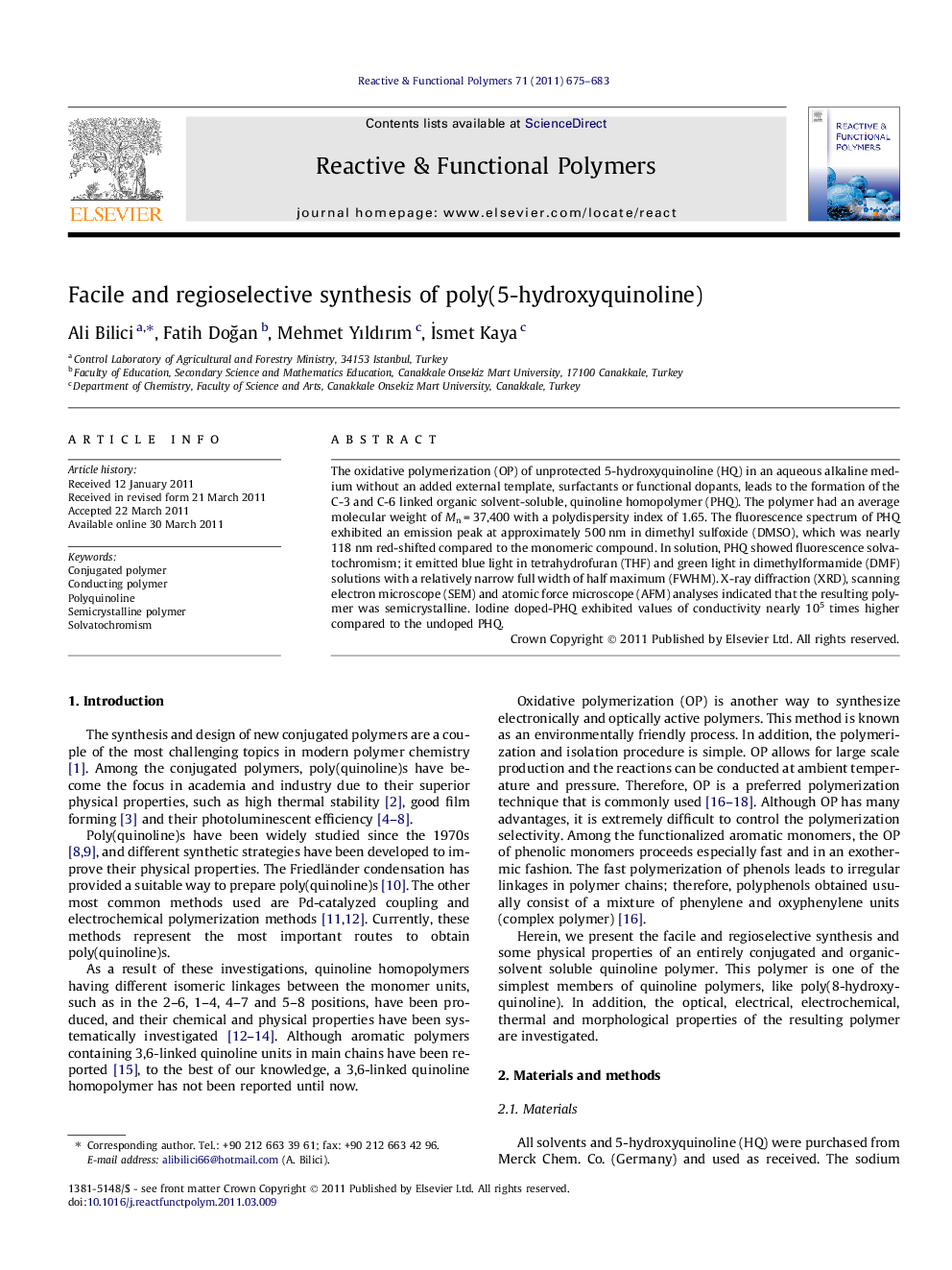| Article ID | Journal | Published Year | Pages | File Type |
|---|---|---|---|---|
| 5210564 | Reactive and Functional Polymers | 2011 | 9 Pages |
Abstract
The oxidative polymerization (OP) of unprotected 5-hydroxyquinoline (HQ) in an aqueous alkaline medium without an added external template, surfactants or functional dopants, leads to the formation of the C-3 and C-6 linked organic solvent-soluble, quinoline homopolymer (PHQ). The polymer had an average molecular weight of Mn = 37,400 with a polydispersity index of 1.65. The fluorescence spectrum of PHQ exhibited an emission peak at approximately 500 nm in dimethyl sulfoxide (DMSO), which was nearly 118 nm red-shifted compared to the monomeric compound. In solution, PHQ showed fluorescence solvatochromism; it emitted blue light in tetrahydrofuran (THF) and green light in dimethylformamide (DMF) solutions with a relatively narrow full width of half maximum (FWHM). X-ray diffraction (XRD), scanning electron microscope (SEM) and atomic force microscope (AFM) analyses indicated that the resulting polymer was semicrystalline. Iodine doped-PHQ exhibited values of conductivity nearly 105 times higher compared to the undoped PHQ.
Related Topics
Physical Sciences and Engineering
Chemistry
Organic Chemistry
Authors
Ali Bilici, Fatih DoÄan, Mehmet Yıldırım, Ä°smet Kaya,
